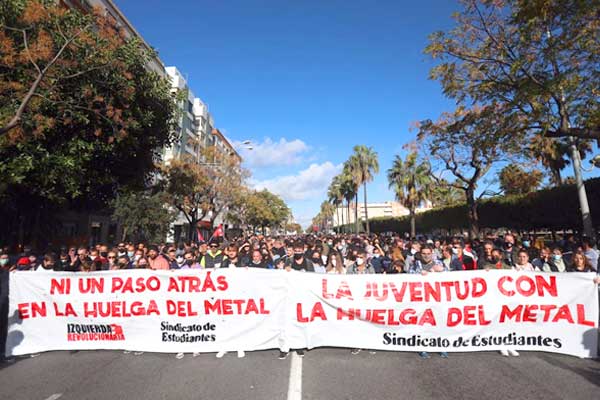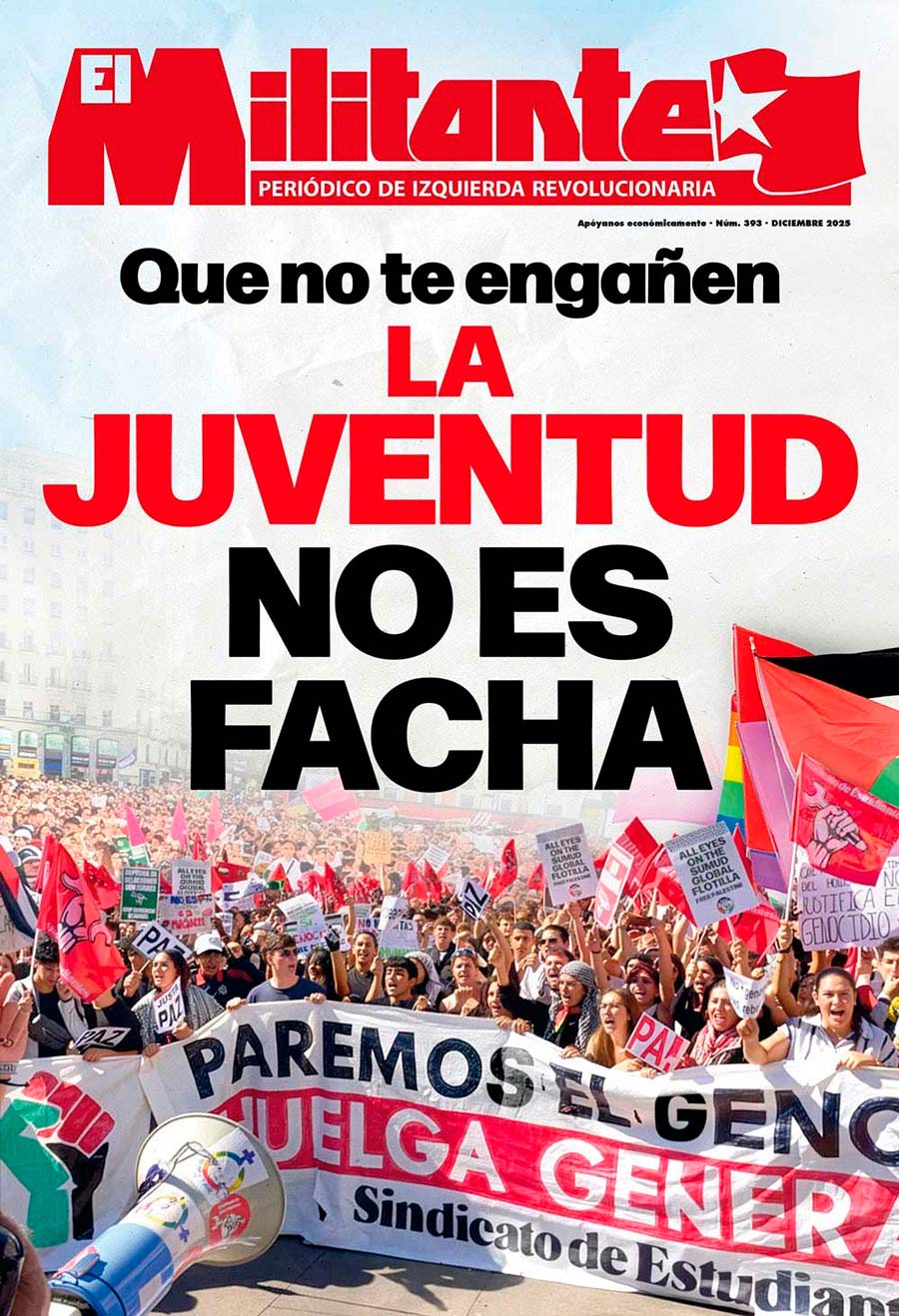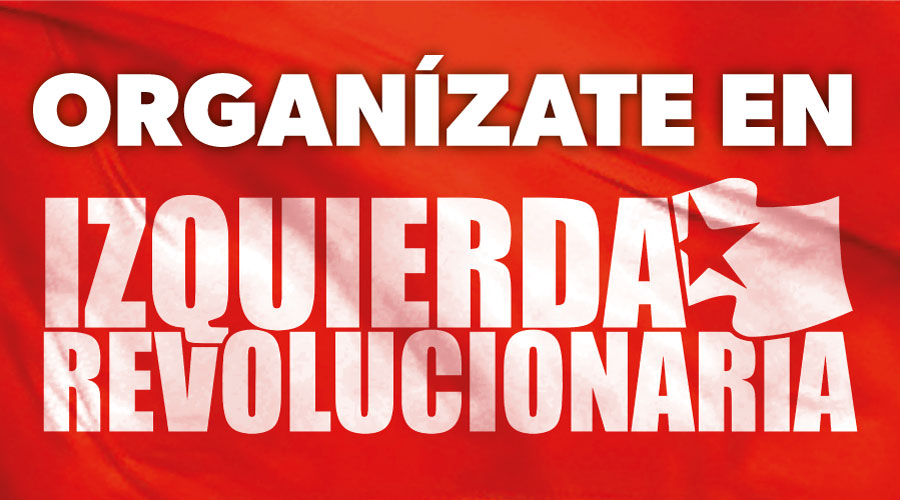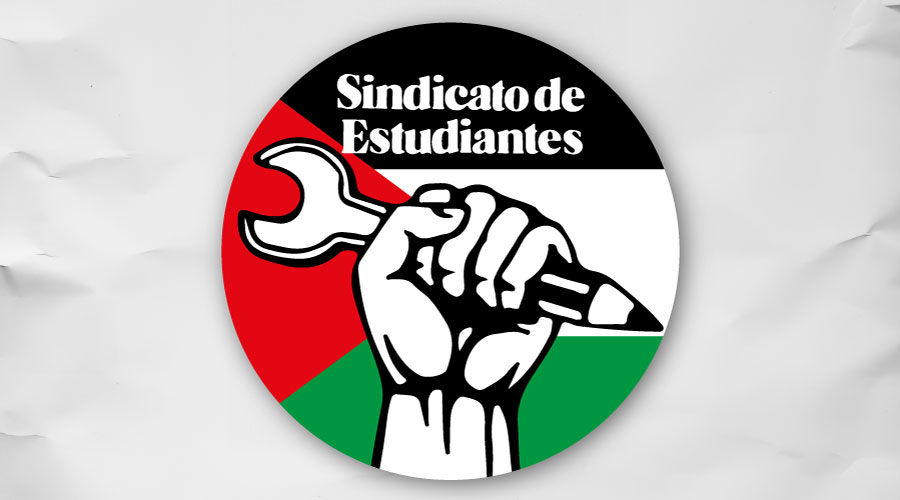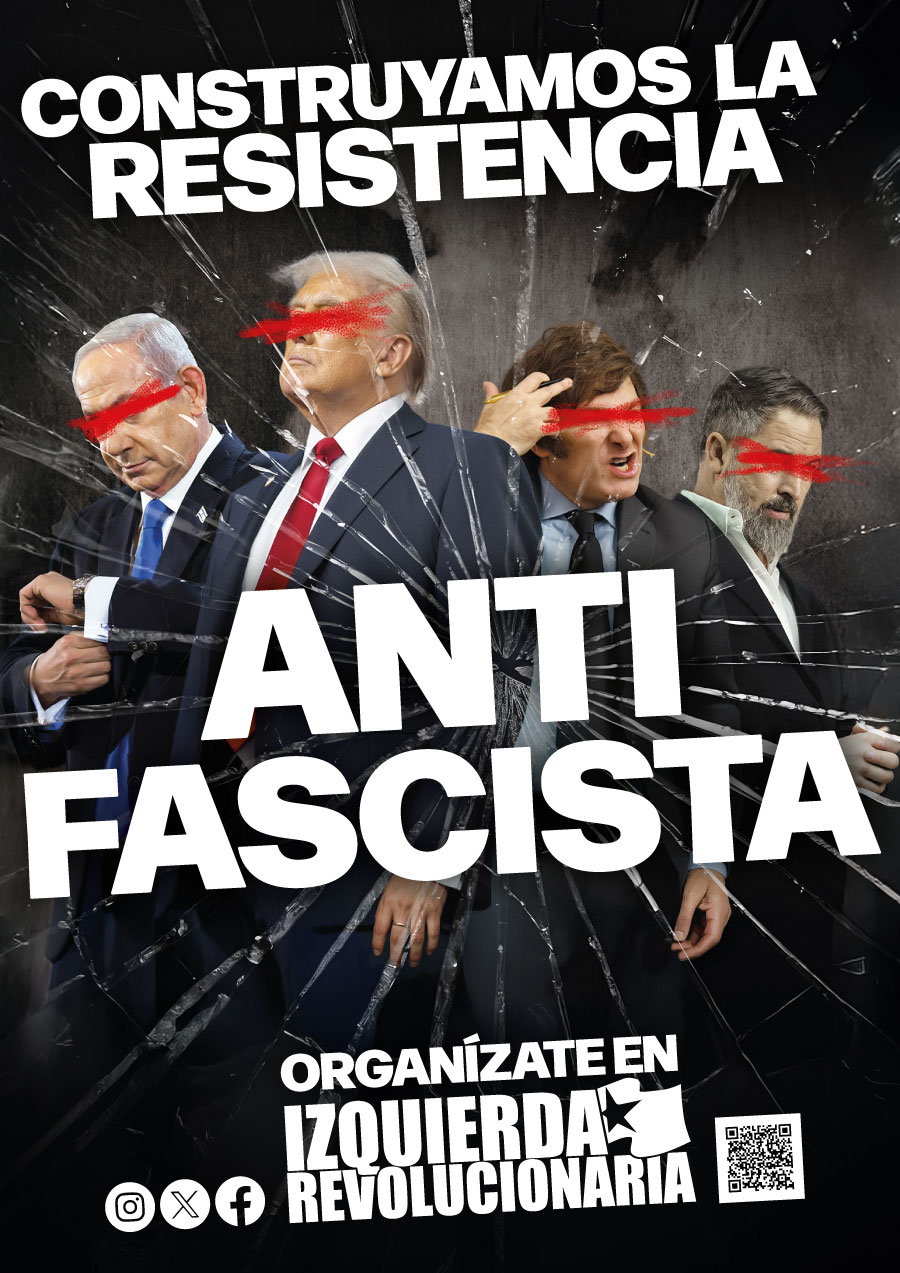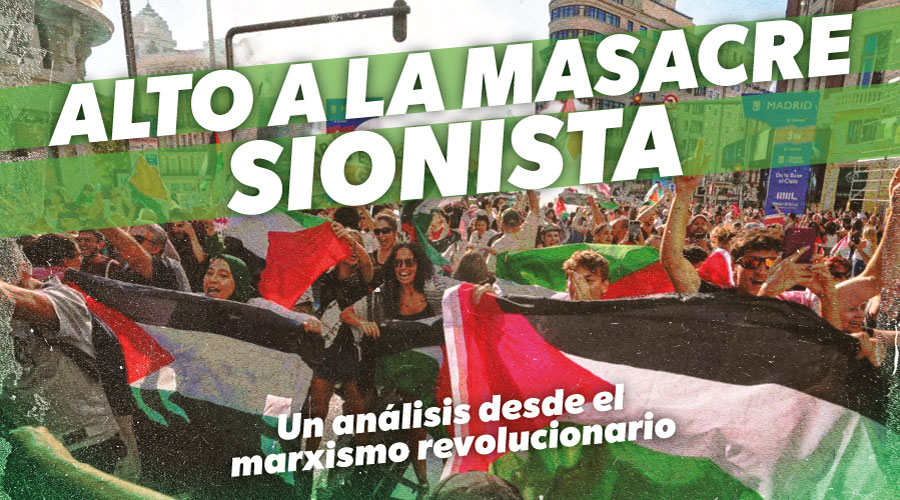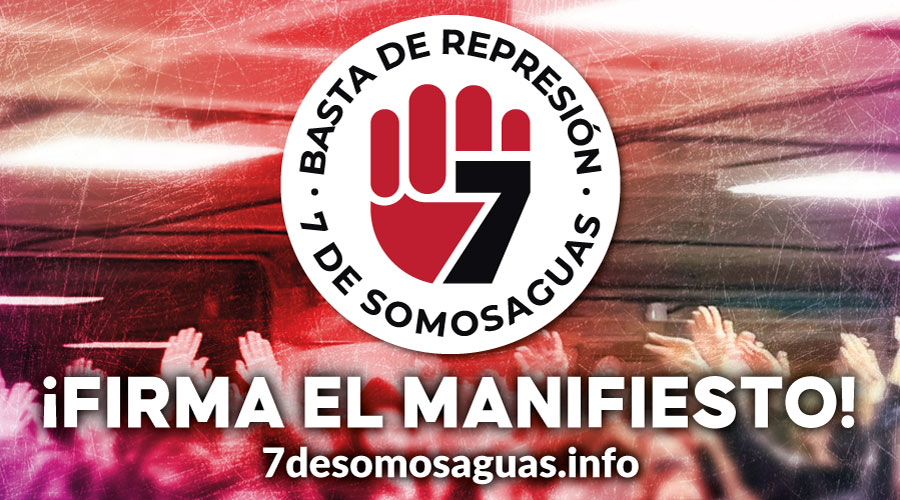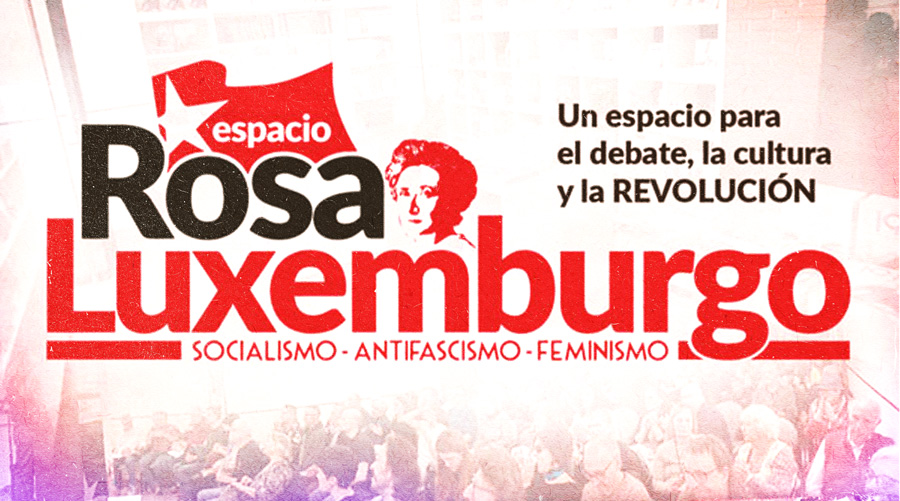Photos and videos of the demonstrations of 23N · 24N · 26N
The struggle of the metalworkers of Cadiz has been much more than a labor dispute over an agreement. It has become a social rebellion against years of setbacks in the living conditions of the working class, precariousness and growth of poverty, and of a union policy whose strategy of waiver of conquered rights, wage cuts, and social peace has only benefited the emboldened bosses.
This strike -which pointed directly to the waterline of its fiction of "most progressive government in history" and of "social shield" thanks to which no one would be "left behind"- caught the PSOE and UP government by surprise. The massive support of the Cadiz population for the strikers -extended all over the country- has brought to light the profound social unrest accumulated for many years, also exposing the charlatanism and hypocrisy of the government managers of capitalism. Much to boast of social sensitivity, and at the moment of truth, they only send tanks and hundreds of riot police armed to the teeth to brutally repress the striking workers and the youth that come out in their support.
When the popular resistance against the police violence and the mobilization were in crescendo, the celebration of the massive demonstration on Tuesday, November 23, which the Student Union and Izquierda Revolucionaria decidedly promoted, set off all the alarms: they had to stop the struggle at any cost. Within hours, the CCOO and UGT bureaucracy -which up to then had been overwhelmed and paralyzed- moved quickly to sign a poison agreement with the bosses and, helped by the media and UP leaders, deceive public opinion by lying about the "assemblies" that supposedly ratified it.
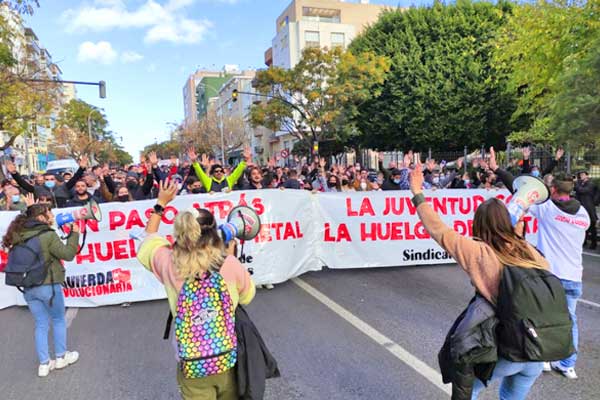
A tremendous strength and will to fight
The most striking characteristic of the Cadiz metal strike is that it began and took its first steps without the unions that call to the strike -CCOO and UGT- making any appearance. At the beginning of the negotiations for the new agreement, both unions' bureaucracies were between the pressure of the workers and the stringency of the employers, fueled by them when they shamefully capitulated in the two previous collective agreements' negotiations.
The submissive attitude of those CCOO and UGT responsible for the metal sector in Cadiz during all these years has encouraged the employers' association FEMCA to such an extent that, confident of getting another downward agreement, presented a new attack on the already low working conditions. Logically, this bosses' offensive increased the anger among the working class of Cadiz, which has assimilated an enormous experience in these years, thus making it more difficult for the rapid withdrawal of union leaders who were already very discredited and unauthorized.
In an attempt to escape this situation, the union bureaucracy first called two days of strike on November 9 and 10 and an indefinite strike starting on November 16.
Any worker knows that an indefinite strike is a serious challenge. The vast majority of the working class needs all their wages to survive. The discounts that this type of strike causes are a great sacrifice. That is why a fight like this needs a good organization capable of mobilizing the solidarity support of the entire working class to form a powerful resistance box to maintain a fight without an end date.
Of course, the CCOO and UGT bureaucracy had no intention of lifting a finger to make this strike a success. Accustomed for so long to make decisions behind the backs of the workers, they did not consider it necessary to convene previous assemblies, nor did they develop a platform capable of winning the enthusiastic support from all metal workers. They did not make pamphlets or posters either, nor did they present a plan of struggle. They called the strike to release the pressure from below, but at no time did they propose to channel that pressure against the employers. From their comfortable offices, they passively watched as the police brutally attacked the workers and did not even bother to publish a statement condemning the repression. Quite the contrary: they hoped that the repression would cool the mood of the workers and allow them to sign an agreement of crumbs and present themselves as saviors in a desperate situation.
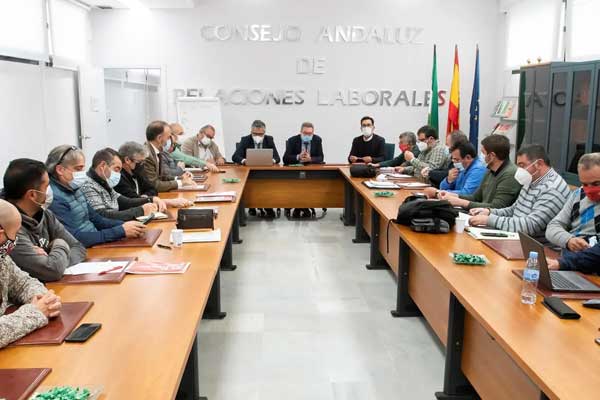
But they were wrong. Despite the abandonment by the union leaders, the workers and the unemployed metal workers response was magnificent. The strike was a success. The picketlines were massive and so full of fighting spirit that the savage attacks of the repressive forces did not defeat them.
The leaders of CCOO and UGT were overwhelmed and frightened by the magnitude of the movement they had set in motion. The government pressured them to prevent the conflict from becoming a reference for the working class all over the country. But far from relying on this extraordinary strength and determination to achieve a worthy agreement, they have chosen to throw themselves into the arms of the bosses.
The working class says enough!
Without the slightest intention of exaggerating, we can say that we have witnessed an exceptional workers' struggle that will mark a true milestone. A turning point in the policy of social peace and generalized demobilization that the PSOE and UP government, with the full collaboration of the union bureaucracy, has tried to impose.
The extensive social support to the strike has aroused both in Cadiz and all over the country is an strong evidence that the workers have drawn conclusions and that what they have experienced in this last period has not been in vain. The years of massive mobilizations from the indignados movement, the "Mareas" and the Marches of Dignity have left a deep mark. The wave of social cuts and attacks to our rights we have suffered after the 2008 crisis and, again, with renewed vigor after the shock of the pandemic, have generalized and exacerbated the discontent in the working class. The passivity of the union bureaucracies against these attacks, if not their open complicity, has given solid roots to a fury that does not stop growing.
In this cocktail, the working youth who have joined the battle in recent years have played a significant role. They are not part of these official unions that have signed setback after setback and see these sectors with distrust and contempt (they are not part of the labor aristocracy). But these millions of millennial workers, precarious and subjected to brutal exploitation, are placing themselves at the center of the class struggle. They are the protagonists of numerous labor disputes in the Basque Country, Catalonia, Madrid, the Valencian Community, and Cadiz.
The Cadiz metal strike has shown that the fighting traditions of our class come to the fore as soon as a fighting flag is considered a clean flag, alien to any hidden interests of a union bureaucracy or a reformist political bureaucracy. The extraordinary firmness with which the workers of Cadiz have faced and resisted the brutal police attacks is an example of this.
The role of revolutionary communists in this struggle
Izquierda Revolucionaria has intervened with all its strength to support the strike and contribute to its victory. The demonstration on Tuesday 23 -when more than 12,000 metal workers and students called to the strike by the Student Union came together- was a tremendous blow. The union bureaucracy only gathered a handful of delegates, while thousands decided to mobilize behind the banners signed by the Student Union and Izquierda Revolucionaria. A symptom of what is coming!
During the four days before this mobilization, the activists and militants of the Student Union and Izquierda Revolucionaria distributed more than 20,000 pamphlets in high schools, university, shipyards and subcontractors companies, and picket lines at five in the morning. We also put up thousands of posters in Cadiz, Puerto Real, San Fernando, and other towns. This display of propaganda, agitation, and intervention side by side with the strikers -holding mass assemblies with pickets and student meetings in dozens of study centers, made it possible to take a great leap. The activity of the union cadres and activists of the Metal CGT and the Coordinadora de Trabajadores del Metal (CTM) –the two unions that have been at the forefront of this battle- was also decisive for the 23rd mobilization to be a complete success.
A revolutionary organization demonstrates its real value in action in class struggle. We quickly understood that we had to avoid the isolation of the strike to make it move forward, so we oriented our intervention to explain the need to organize the struggle, extend it, and involve the entire working class in it.
We participated in the daily picket lines in San Fernando from the very first day. We encouraged the assemblies and concentrations held there with our pamphlets explaining the need for the workers to decide the plan to organize the strike, approve a platform, and have the last word in the acceptance or rejection of any pre-agreement.
In the following days, we made a more concrete platform, with specific demands for a salary increase, a minimum wage in the metal sector, collection of the Toxic, Painful, Dangerous Plus, a reduction in the annual working day, etc. The fight stop being defensive - only to quit or reduce cuts- and became offensive. The central idea of our intervention was: We have the strength not only to stop the attacks but to win a worthy agreement, an agreement with significant improvements!
On Thursday, 18, we took a big step forward by promoting a demonstration in front of the headquarters of the FEMCA, the employers' association. The proposal for this demonstration was already circulating informally among the strikers. We take out a pamphlet and spread it massively, together with the protest platform. In this way, we managed to gather enough forces to carry out a large demonstration in Cadiz, which multiplied the mood of the workers, especially after the intervention of comrade Antonio Muñoz, leader of the CGT metal and IR militant, from the stairs of the cathedral. The demonstration tour through the streets of Cadiz allowed us to see live and direct the enormous support of the population and the extraordinary strength of the workers in struggle.
On Saturday, November 20, the big demonstration organized by the CGT, the CTM, and the union confluence to support the strike marked a new milestone. From that moment on, the struggle was on the rise. Even the union bureaucracy felt the breath of the street and was forced to call the demonstration on Tuesday 23, once the Student Union had already called for a student strike and a demonstration.
This strike marks a turning point
The growth during the last period of a very critical conscience against the capitalist system, the policies of social cuts and police violence had to express at some point. In Cadiz, we have also experienced the collapse of the program of the new reformism -represented by the ministers of Unidas Podemos, who have settled for being the propagandists of the PSOE politics and the spokesmen of the union bureaucracy. Their role has been to put out the fires of this battle, fearful that it could upset the political stability they seek to finish the legislature at any price.
Face to face with the workers' struggle, the leaders of Unidas Podemos have been gradually losing authority and prestige, and with good reason! The pathetic statements on Radio Nacional by the general secretary of the PCE, Enrique Santiago, asking for "confidence" from the workers while the repressive forces of his government beat them are a clear example of how far they are from the interests and needs of the working class.
Cadiz's working class has been suffering attacks for decades. But the workers and the entire population have always responded in a massive and combative way. The discredit of CCOO and UGT deepened as their leaders repeatedly betrayed the struggles. These precedents explain why it is in Cadiz where the first social outbreak under the government of the PSOE and UP has occurred. But the underlying situation is the same all over the country, and sooner than later, the workers' protest will express in the streets in such a powerful way.
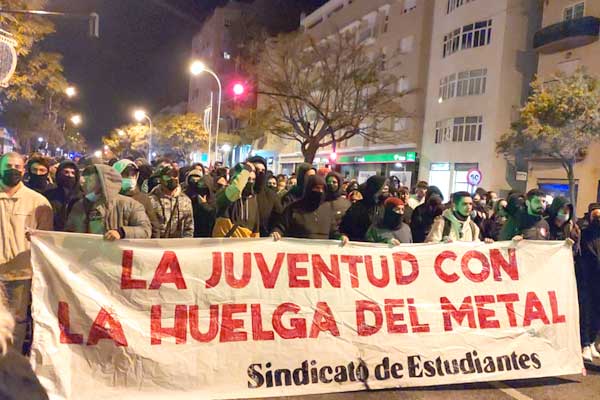
The pre-agreement and the calling-off of the strike by CCOO and UGT in no way change the conclusions from this struggle. This hasty signature shows the panic of the government, the bosses, and the bureaucracies of CCOO and UGT to the spread of the example of the Cadiz metal struggle and the fear that a general movement of sympathy and solidarity could become a general offensive of the working class.
The farce of the "assemblies" that supposedly approved the preliminary agreement and the campaign unleashed in the media by UP leaders -with Yolanda Díaz at the head- and by journalists, opinion leaders, and "intellectuals" at the service - well paid, by the way - of the union bureaucracy is just an example of their weakness and fear of mobilization.
Despite the pre-agreement, the fight will return firmly sooner rather than later. The backstabbing effects they've given us won't last long. The most important thing now is to learn from this magnificent strike.
The first lesson is that we have more than enough strength to turn this situation around. This rebellion has shown that we are strong. We have paralyzed the production in the sector, we have broad social support, and the repression of the State has been powerless to take us back down.
And the second one is that the CCOO and UGT bureaucracies - well finance by the State and employer subsidies - despite having managed to prevail for the moment, come out of this battle more touched, unauthorized, and questioned than ever.
The task ahead is not easy, but it is the only one that can give results. We need to build a class union alternative, combat, militant, democratic, and with an anti-capitalist program. That is what Izquierda Revolucionaria fights for together with the Metal CGT comrades and the trade unionists of the CTM, with whom we have always maintained the unity of action.
It is essential to have an alternative trade unionism that brings together the vanguard that has been at the head of this extraordinary struggle. But the behavior of the political leaders who defend the system and have acted to crush this historic strike reminds us of another important conclusion. This reformist and parliamentary Left and their leaders, that come from the petit bourgeois layers and had no contact with the factory exploitation, and no economic difficulties, are a dam of contention for the class struggle.
That's why they hate what has happened in Cadiz. Because the working class has been put in the center, exposing a situation that has nothing to do with the fairy tale they propagate. We, revolutionary communists, raise the flag and stand beside our class with more determination and conviction. Not to take personal advantage, neither to exploit our ego, but to advance consciousness and organization. That is why we organize in Izquierda Revolucionaria, and that is why we invite you to join us. Now is the time!






